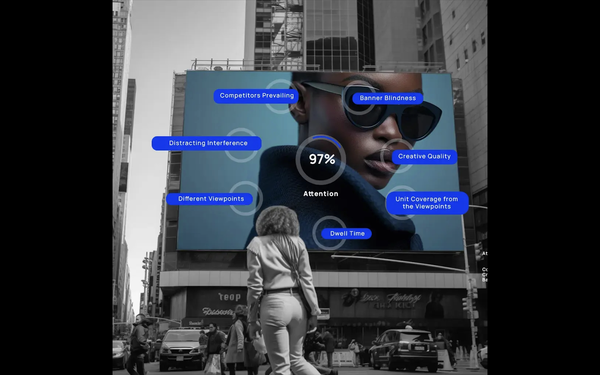
At a time when advertisers
and agencies are vetting a slew of new and emerging new audience attention metrics for a variety of electronic media – principally digital and TV – independent out-of-home media-buying
agency Billups this morning unveiled its own new “quantifiable” attention metrics of both conventional and digital out-of-home media ads.
The move is noteworthy, because
out-of-home media has long had a higher standard of proxies for attention, utilizing a variety of visibility adjustments to calculate the likelihood of consumers to actually see out-of-home
advertising, vs. thie historic “opportunity-to-see” standards used by most other media to date.
Not surprisingly, Billups is touting artificial intelligence as a
component of its new attention metrics, describing them as “AI-based analytics” and rolling out its own proprietary dashboard for advertisers to access them.
advertisement
advertisement
“The
AI-based Billups Analytics Attention Dashboard is a privacy-compliant platform that provides depth to the quality of out-of-home impressions,” the company states in this morning’s
announcement, adding that it enables advertisers to evaluate and adjust “for site-specific features that may impact a viewer’s ability to see and recall an ad.”
Importantly, Billups methodology factors both the physical media, as well as the creative execution of out-of-home ads it measures.
“Using environmental and
contextual conditions to evaluate the individual units, the offering includes metrics like reach, frequency, audience demographics, and dwell-time analysis estimating how fast a person or vehicle is
moving or resting near the unit,” the company says, adding, “The resulting attention score shows how much more effective the board is at securing attention than others in the market,
whereby lower percentages indicate normal performance and higher percentages showcase outstanding attention-grabbing opportunities.”
The agency says the new attention dashboard
is available in beta to its clients and media and agency partners in the U.S. and Europe with rollouts to Canada and parts of Asia-Pacific planned later this year.